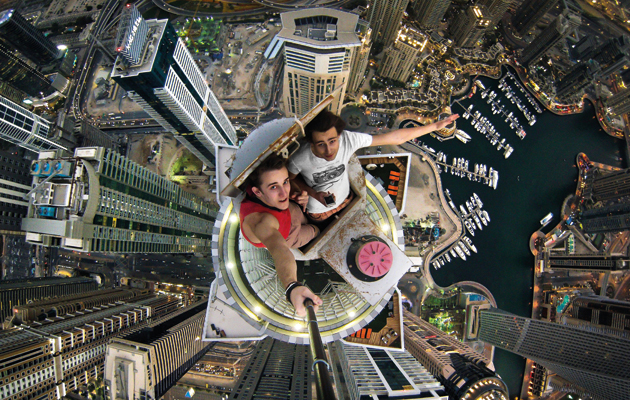|
|
||
|
It is the perfect symbol of a narcissistic, social-media-obsessed society that doesn’t even realise what terrible photos it’s taking, says Edwin Heathcote The selfie is, without doubt, the phenomenon of our time. During its short existence, it has blossomed into the belfie (a self-shot photo of the arse), the no-make-up selfie, the celebrity selfie, the space selfie (astronauts against a background of Earth) and, of course, the naked selfie, downfall of politicians and uptick capable of propelling minor celebrities into the stratosphere, once their sexy selfies are “accidentally” leaked. Now, the phenomenon has been compounded by the selfie stick, a hand-held, telescopic monopod designed to allow a wider angle on a selfie – and show more background – than just the usual arm’s length can provide. In addition, it also delivers the flattering “from above” shot, eliminating double chins and making bodies look slimmer. I hadn’t been aware of this phenomenon until I went on holiday to Barcelona last year, when I saw lone travellers using selfie sticks to take panoramic photos of themselves against backgrounds of Gaudí, Gehry and Mies. Otherwise, presumably, no one would believe they had actually been there. Despite being a runaway success as a present, the selfie stick is nothing new – back in 1995 it even appeared in a book of useless Japanese inventions. Yet it is only now that it has established itself as a perfect metaphor for the atomisation of contemporary society, and for the vanity of the individuals who need to post each and every moment on social media to validate it. Having been somewhere, having impressions and memories, is no longer enough. If it hasn’t happened on social media, it hasn’t happened at all. There’s an inevitable phallic dimension to the extending pole, and I’ve also seen it referred to as the “Wand of Narcissus”. The selfie stick extends in order to expand the frame, encompassing a wider landscape, but what it really does is limit the subject to the individual – the only conceivable foreground – and relegate everything else to background. The selfie stick is the replacement for the ancient ritual of asking a stranger if he or she wouldn’t mind taking a photograph – it is a surrogate stranger, replacing one kind of bad photo with another. But, in terms of design and conception, it would be difficult to find a product more in tune with the preening narcissism of contemporary culture. Since encountering them over summer, I’ve noticed selfie sticks with increasing frequency, converting tangible moments and real places into intangible images in cyberspace. Rather wonderfully, they also manage to make the extraordinary advance of being able to slip a portable hi-res camera into your pocket – one of the attractions of the smartphone – obsolete overnight, condemning users to carrying a kind of clunky riot baton around with them at all times. And there are now plenty of instances of people being killed or maimed by selfies. In the Philippines one girl fell down the stairs as she moved back to get a better picture, while in Mexico a lad blew his head off as he tried to take a selfie with gun in hand, clearly getting button and trigger confused. These candidates for the Darwin Awards are at least cleansing humanity’s gene pool, but I’d hazard a guess that the first selfie-stick murder can’t be far away. I wince to think how it will be done. |
Words Edwin Heathcote
Above: Two Russian teenagers on top of Dubai’s Princess Tower |
|
|
||

















